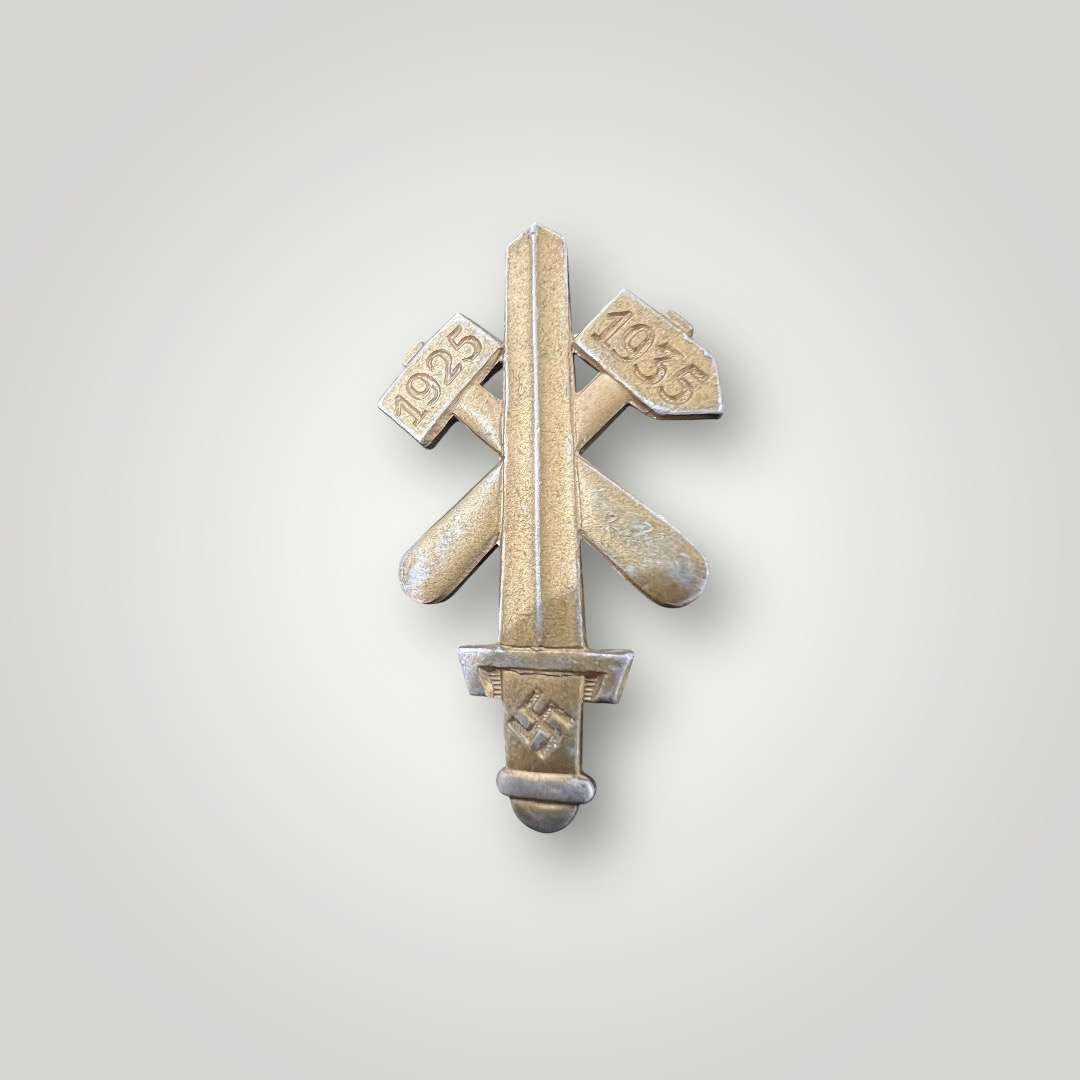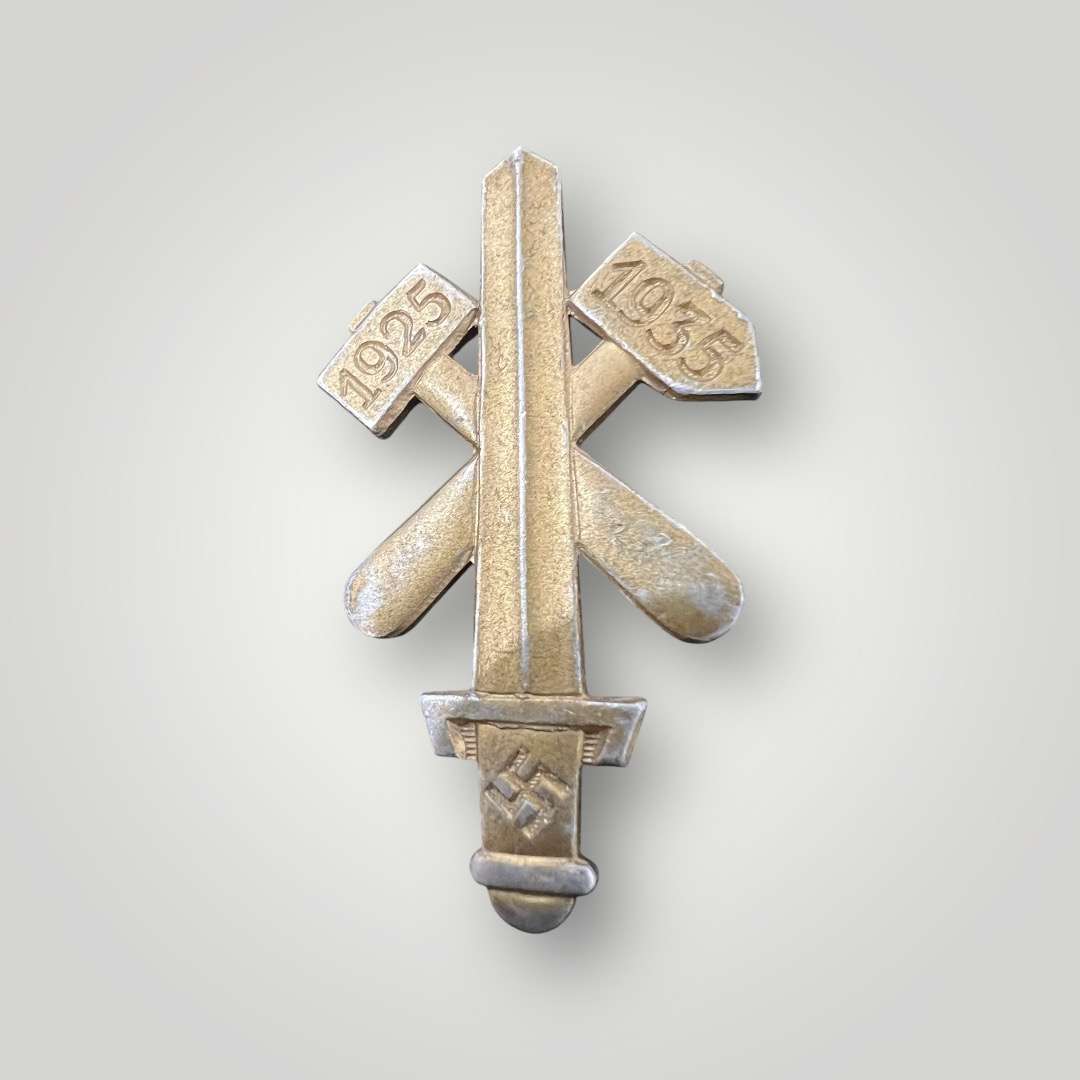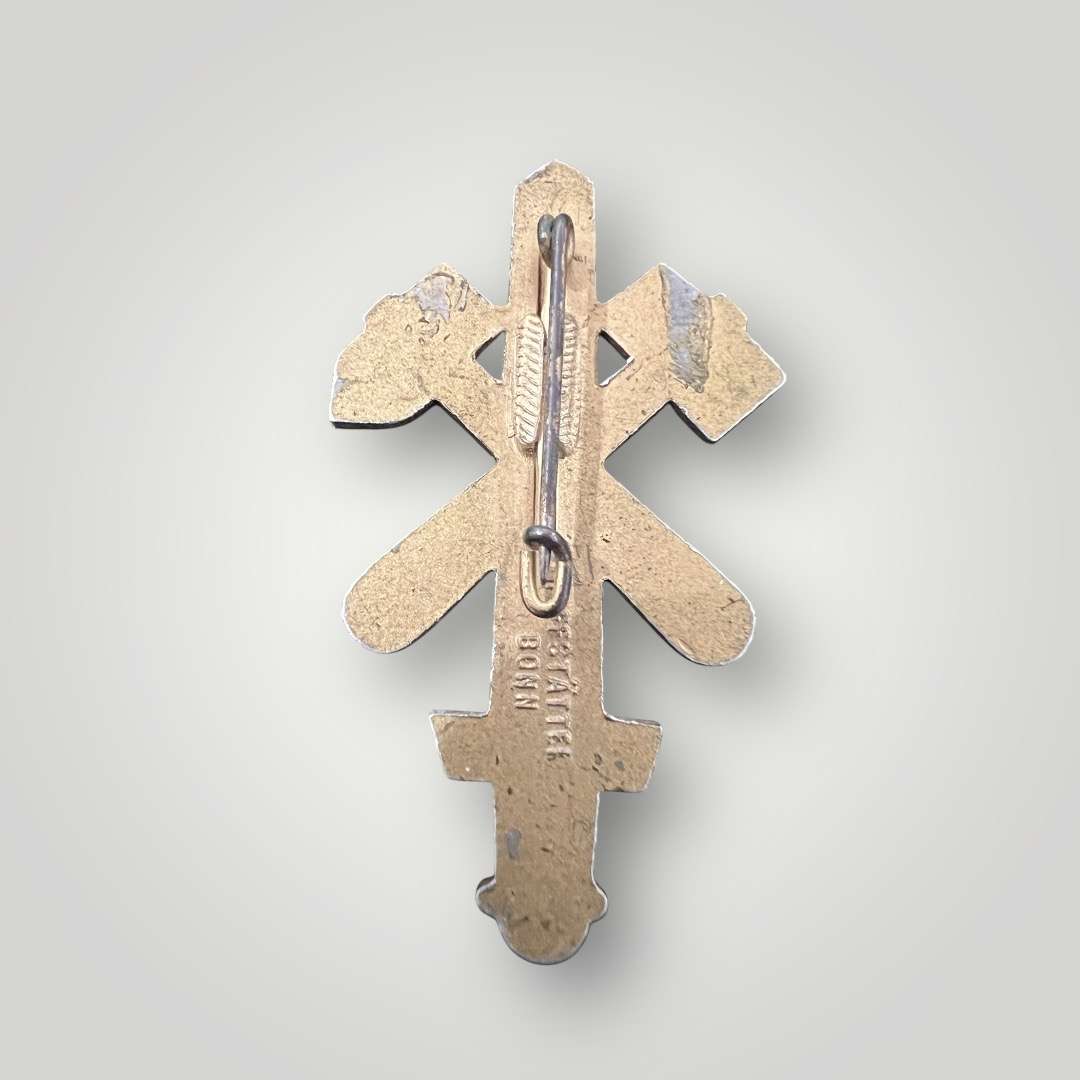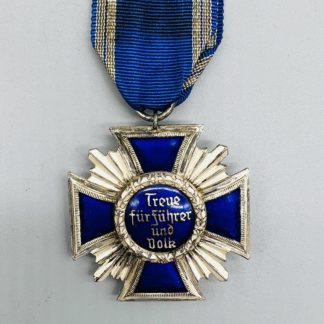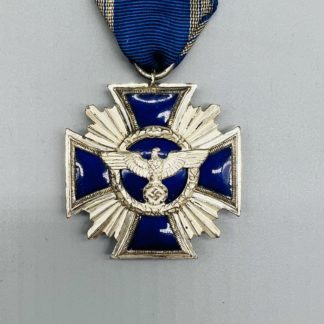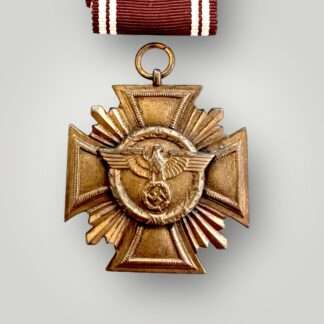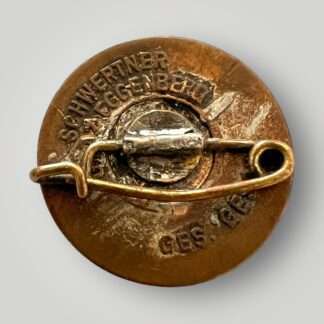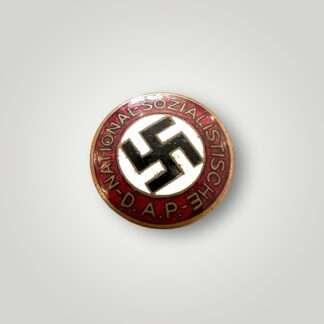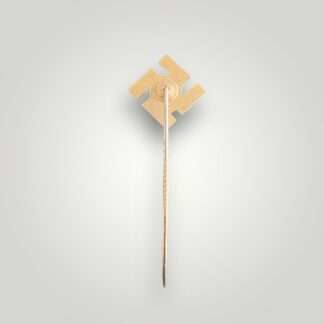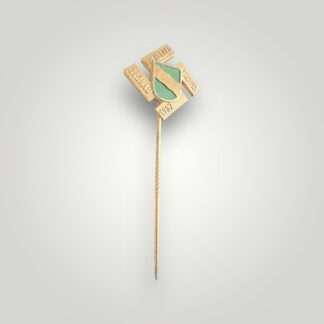Description
Gau Essen Honour Badge
The Gau Commemorate Badge, known in German as the Gau-Ehrenzeichen, was a political award issued by various Gauleiters of the Nazi Party. These badges were designed to recognize loyal service or commemorate specific events within the Gau, which were regional divisions of Nazi Germany corresponding to the traditional German states. While considered Party awards, they were not recognized as national awards, and the regulations for the awards were determined by the Gauleiter.
The Gau Commemorate Badge was part of the Nazi Party’s broader effort to foster loyalty and recognize contributions among its members. Each Gauleiter had the authority to issue these badges. The purpose was twofold: to reward individuals for loyal service and to commemorate significant events within the Gau.
The Gauleiters were powerful figures in Nazi Germany’s political structure. They were responsible for the administration and political oversight of their respective Gaue, designed to replace the traditional states and provinces. The role of a Gauleiter involved both political leadership and the implementation of Nazi policies at the regional level.
Given their significant influence, Gauleiters had the discretion to establish and award the Gau Commemorate Badge. The criteria for these awards varied from one Gau to another, reflecting the priorities and events deemed significant by each Gauleiter.
The design of the Gau-Ehrenzeichen often incorporated symbols and motifs associated with the Nazi Party and the specific Gau. Common elements included the swastika, the eagle, and other Nazi iconography. The badges were typically made from metal and could be worn on the uniform or civilian clothing of the recipient.
Some Gauleiters introduced multiple degrees or classes of the badge to distinguish between different levels of service or types of events. For instance, there might be a basic badge for general loyal service and a more prestigious version for exceptional contributions or to mark particularly significant occasions. Although the Gau Commemorate Badge was a Party award rather than a national one, it held considerable prestige within the Nazi Party. Recipients were often recognized for their dedication and contributions to the Party’s goals. The awarding of these badges helped foster a sense of unity and commitment among Party members.
In addition to recognizing service, the Gau-Ehrenzeichen was also used to commemorate specific events within the Gau. These could include the anniversary of the Gau’s establishment, significant rallies, or other notable occasions. The badges served as tangible reminders of these events and as symbols of the Party’s enduring presence in the region.
The Gau Commemorate Badge, like many other aspects of the Nazi Party’s system of rewards, was deeply entwined with the Party’s ideology. While these badges were a means of recognizing loyalty, they also played a role in promoting the Party’s values.


